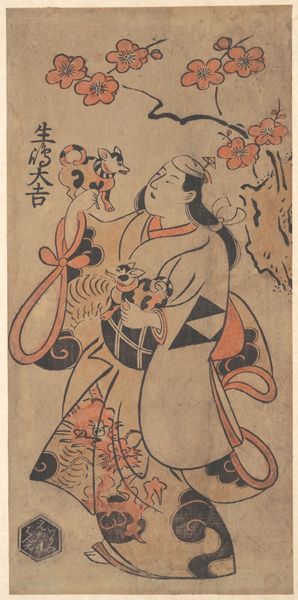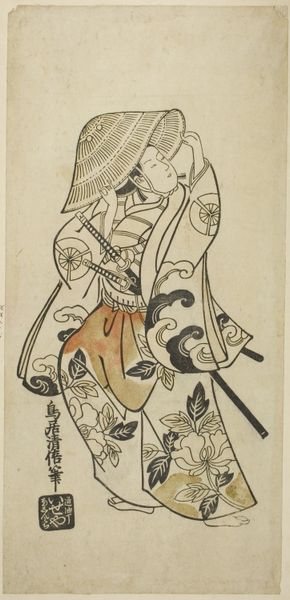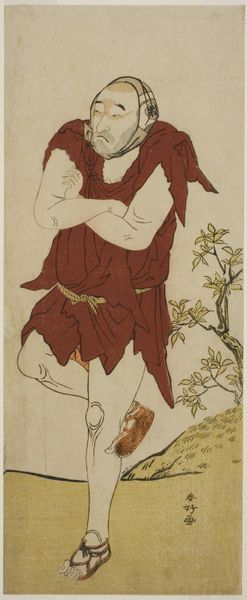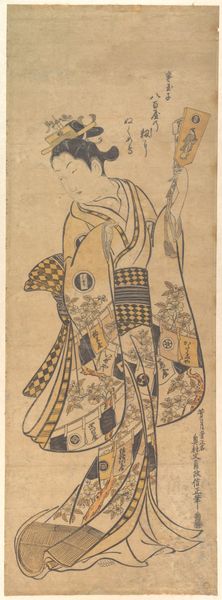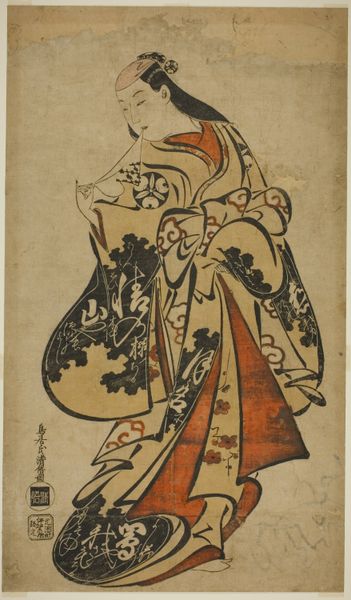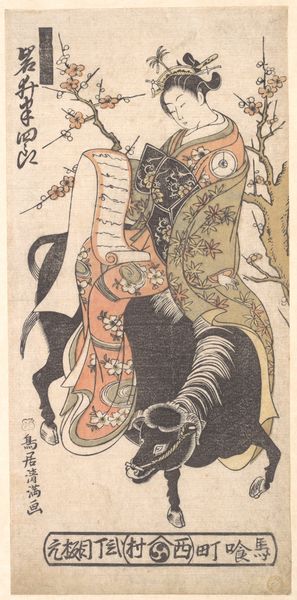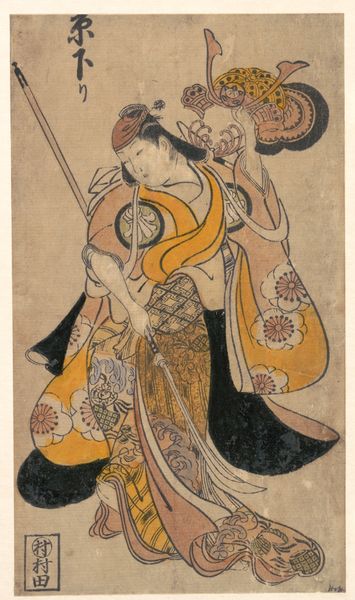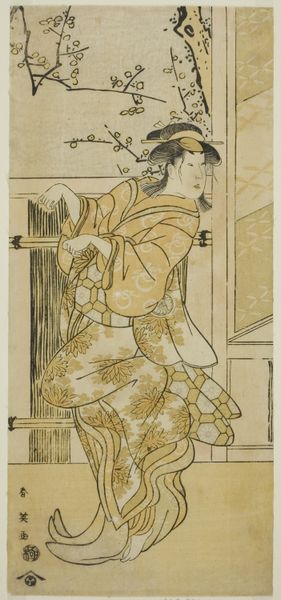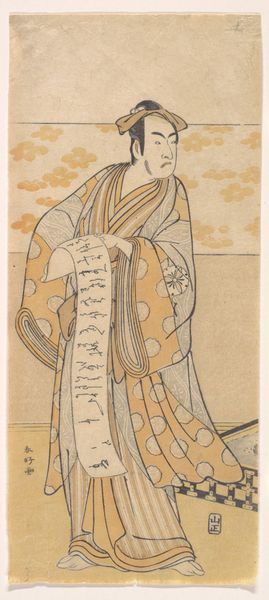
Two Famous Wrestlers Onogawa and Tanikase 1785 - 1805
0:00
0:00
print, ink, woodblock-print
#
portrait
#
ink painting
# print
#
asian-art
#
ukiyo-e
#
japan
#
figuration
#
ink
#
woodblock-print
#
men
#
genre-painting
Dimensions: H. 12 1/2 in. (31.8 cm); W. 5 3/4 in. (14.6 cm)
Copyright: Public Domain
Curator: Let's take a look at "Two Famous Wrestlers Onogawa and Tanikaze," a woodblock print by Katsukawa Shun'ei, dating from the late 18th century and held at the Metropolitan Museum. What strikes you first about this work? Editor: The sheer physicality of the wrestlers. You can almost feel the strain, the intense pressure in this lockup. The artist uses such economical lines to suggest this incredible bulk and the specific materials they’re wearing in the bout. Curator: Precisely. The artist is highlighting not just their physique but the controlled, manufactured display of strength, central to the highly regulated spectacle of Sumo. These prints, produced in multiples, became commodities themselves. We must examine the artist's workshop; who were his collaborators, what resources were at his disposal and who bought these prints? Editor: Absolutely, and let's not forget how Sumo, while a public display, operated within a strict hierarchical structure reflecting the larger social order. Consider the representation of the body itself—muscular, yet conforming to specific ideals valued in Japanese culture at the time, reinforcing masculinity but with a certain disciplined aesthetic. What are the ways we could compare it with similar depictions of athletes and athletic spectacles in different cultures? Curator: Excellent point. Also note the delicate skill that elevates the piece above pure function; the registration of the multiple color blocks alone signifies specialized, practiced labor. These prints are made in series for popular consumption, they can and should be considered alongside paintings and drawings, disrupting art historical hierarchies. Editor: Indeed, to understand this print, we must consider its reception by diverse audiences, unpacking the ways they navigated its cultural and political messages. These images don't simply reflect society, they actively participate in shaping ideas about power, masculinity, and national identity. Curator: I think looking through a material lens helps to bridge the art of the past and the manufacturing processes of today, prompting a deep investigation of labor, commodity and value. Editor: Examining its cultural and social implications can further expand how we look at representation and impact. Thanks to this artwork we may both reconsider preconceived notions about aesthetics and representation and engage critically with prevailing social narratives.
Comments
No comments
Be the first to comment and join the conversation on the ultimate creative platform.
